What a student needs to know on a Chinese student tour? Chinese history and nature are musts. Therefore, this 10-day China student tour will meet your needs. You can start your classic China student tour from Beijing, visiting the Forbidden City and the Summer Palace where the emperors of ancient China used to live and work. The No.8 wonder, Terra Cotta Army is included in the following Xi’an tour, where you will learn about China 2,000 years ago. You will also admire the natural beauty of China in Guilin by taking Li River Cruise. Then you will go to Shanghai, the most prosperous city in China. Climbing to the highest building, Shanghai Tower, you can appreciate the panoramic view of Shanghai. You will get a glimpse of the combination of modernity and tradition in this city. I can assure you that the China student tour from Beijing to Shanghai will greatly widen your horizon and make you have a deeper understanding of China. This China student tour will give you a unique experience in China. Don’t hesitate and join us now.

As soon as you arrive in Beijing, your tour guide will welcome you in the arrival lobby and take you to the hotel. You can have a long sleep and prepare yourself for tomorrow’s journey. Beijing is an amazing city and you will not regret being here. Beijing is the capital city of China, located in the north of China. It covers an area of 16,410 square kilometers and has a population of about 21.89 million. Beijing is a city with a long history and you can visit many places of interest here. I am sure your Beijing student tour will be colorful and interesting.
In the morning, you will get to Tian’anmen Square. Tian’anmen Square was built in the Ming Dynasty (1368-1644), lying at the center of Beijing. It is 880 meters in length and 500 meters in width, covering an area of 440,000 square meters. From north to south, you can see the Flagpole, Monument to the People’s Heroes, Memorial Hall of Chairman Mao, and Zhengyang Gate Tower. In the west stands the Great Hall of the People, where many national meetings are held, and in the east lies the National Museum of China. In the Ming and Qing(1636-1912) Dynasties, only the emperor of ancient China could pass through the front gate of Tian’anmen Square. In 1925, Tian’anmen Square opened to the public. Since the founding of the People’s Republic of China in 1949, it has become an emblem of China. Come here and you will feel the solemnity of this place because it is an important place for Chinese people and the government.
Then you will leave for the Forbidden City (closed each Monday). The Forbidden City is the imperial palace of the Ming and Qing Dynasties. The Forbidden City has an area of about 720,000 square meters with more than 70 palaces. It took 14 years to finish its building from 1406 to 1420. The Forbidden City is divided into two parts, the outer court where main ceremonies were held, and the inner court where the emperors and empresses of ancient China lived. A 10-meter wall is erected around the palace to protect the safety of the royal family. Besides the wall, there is a moat outside the Forbidden City. The moat is 20 meters away from the city wall with a width of 52 meters. It was dug to provide water resources to the palace and protect the royal family from invasions. I believe these grand palaces and their delicate layout will make you surprised.
After lunch, your tour guide will take you to the Temple of Heaven. With covering an area of 2,730,000 square meters, the Temple of Heaven was built in the 18th years of the reign of Emperor Yongle (1420) in the Ming Dynasty, and was rebuilt in the Qing Dynasty during the reign of Emperor Qianlong (1711-1799) and Guangxu (1875-1908). The Temple of Heaven used to be a place for emperors of ancient China to pray for a good harvest and worship heaven. If you come here, you can visit the Hall of Prayer for Good Harvest, Red Throne Steps Bridge, Imperial Vault of Heaven, Echo Wall, and Circular Mound Altar. These places are famous for their well-organized layout, building construction, and exquisite architectural ornaments. You can stand on the Circular Mound Altar, where the emperors used to pray and experience how the emperors perform their duties. Maybe you are lucky to hear from God.
After visiting the Temple of Heaven, you will come to the Summer Palace. The Summer Palace is an imperial garden of the Qing Dynasty, located in the western suburb of Beijing, 15 KM away from the city center. It was built in 1750 in the Qing Dynasty, covering an area of about 3 square kilometers. Emperor Qianlong built it for his mother, Empress Dowager Chongqing to show his filial respect. The Summer Palace consists of two parts, Longevity Hill and Kunming Lake. You can enjoy the sceneries of hills and lakes interlaced with each other. The most famous attractions you can’t miss are the Hall of Benevolence & Longevity, Hall of Jade Ripples, Hall of Joyful Longevity, and Grand Theater at Garden of Virtue and Harmony. As the best-preserved ancient opera stage with the largest in architectural scale in China, the Grand Theater is a place you must visit. It was built in 1891 for Empress Dowager Cixi to watch Peking Opera. It is said that Cixi watched more than 260 operas here. The Grand Theater was cleverly designed to make the viewing experience better for Empress Dowager Cixi. There are three levels of stages, each with entrances and exits. There are seven passageways from the top level and six from the ground level to the backstage, from which the actors can enter and exit. The most important function of these passageways is that the actors can emerge from them during the performance to achieve the effect of surprise. During your visit, you can experience how extravagant Empress Dowager Cixi’s life was.
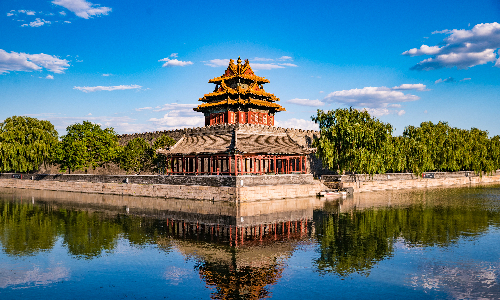
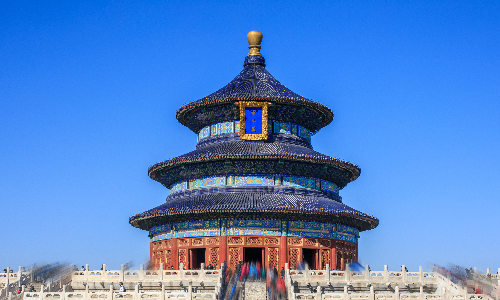
After breakfast, you will head to Ding Tomb. It will take us about an hour to drive northwest to Ding Tomb, which is 40 kilometers away. Ding Tomb is one of the 13 tombs of Ming Tombs. The 13th emperor of the Ming Dynasty and his two empresses were buried here. This tomb was built between 1584 and 1590, covering an area of 182,000 square meters. The general layout of the buildings on the ground in Ding Tomb is round in the front and square in the back, which contains the symbolic meaning of the ancient Chinese philosophical concept of " heaven is round and earth is square". As the only excavated tomb of Ming Tombs, Ding Tomb was damaged because of limited excavating technology at that time. Some of the silks unearthed were weathered away. Afterward, the government decided not to excavate the emperors’ tombs until we have sufficiently advanced technology to protect the cultural relics.
In the afternoon, your tour guide will accompany you to Juyongguan Pass Great Wall. Juyongguan Pass Great Wall is in the northwest of Ding Tomb. You will spend about half an hour getting to the 25-KM-away Juyongguan Pass Great Wall. In the Yuan Dynasty (1271-1368), Juyongguan Pass was an important gateway from Dadu (now Beijing) to Shangdu (now Duolun, Inner Mongolia). Because the emperors often passed by, there were palaces, temples, and gardens which were built here to meet the emperor’s needs. In 1368 (Ming Dynasty), the Juyongguan Pass Great Wall was built and became a military fortress. Being here you will have a chance to see the thousands of crenels on the Great Wall, as well as elegant stone carvings of Cloud Platform. The Juyongguan Pass Great Wall is 4000 meters in length. There are no cable cars set along the way, so you need to climb the Great Wall on your feet. You may know there is a famous saying that goes in China, “One who fails to reach the Great Wall is not a hero.” Therefore, you can experience the feeling of being a hero by reaching the top of the Great Wall. This experience will make your Great Wall student tour more colorful. When you finish your Great Wall tour, you will be transferred to the hotel and get ready for the journey tomorrow.

 Xi’an
Xi’an After breakfast, your tour guide will escort you to the airport and you can take the estimated high-speed train G89 06:53/11:24 to Xi’an. After arrival, your Xi’an guide will be waiting for you at the arrival hall of the train station.
In the afternoon, you will go to the Muslim Quarter. The Muslim Quarter is a representative of Xi’an, known for its northwest foods. Its main street is 500 meters long from north to south. On both sides of the stone slab walkway stand imitations of the Ming and Qing architectures with Islamic styles. If you are a food lover, the Muslim Quarter is a must-visit place. You can taste the traditional foods of Xi’an, such as Roujiamo (Chinese burger), Liangpi (cold noodles with a sauce made of soy sauce, pepper powder, and vinegar), and Zenggao (a kind of cake made from glutinous rice and red jujube). I’m sure you will indulge yourself in delicious foods.
After enjoying the local food, your tour guide will take you to the Great Mosque which is located in the Muslim Quarter. The Great Mosque was built between 1368 and 1398 in the Ming Dynasty. If you look from the outside, you may not notice that this is a mosque, because its architectural style is similar to the classical Chinese courtyard. Inside the mosque, you will see that it is different from Chinese courtyards because all the settings strictly follow the doctrine of Islam, and Arabic is carved on the stones. So, the Great Mosque is a great combination of Chinese Han culture and Islamic culture. At the end of the day, your tour guide will take you to the hotel and you can refresh yourself and look forward to the journey tomorrow.

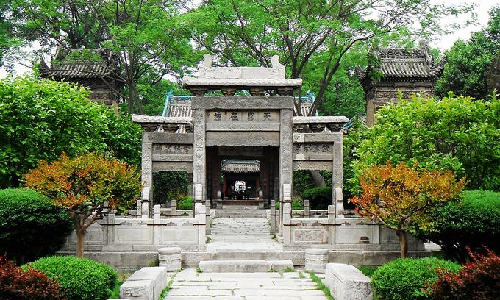
After breakfast, you will go to Terra Cotta Warriors and Horses Museum which is 43 KM away from the city center. We will drive northeast for about 50 minutes to get here. The Terra Cotta Warriors and Horses are the sacrificial objects of the first emperor of the Qin Dynasty (221 BC-207 BC). They were discovered in 1974 and were honored as one of the eight wonders in the world. More than 200 foreign leaders and heads of government, such as Clinton and Bush, have visited this place. There is an interesting story about the terra cotta warriors. As you walk into the museum, you may notice that some of the warriors are without helmets and have a beer belly. At that time, the position of warriors was linked with their military exploits. The more enemies they kill, the higher their positions are, and the more rewards they would get. Therefore, they would take off the helmets when they were in a war because the helmets would be a hindrance when they fight with enemies. Besides, to be fearless, they would drink a lot before they went to the battleground. If things continue this way, it is no wonder that some of the soldiers and officers have a beer belly. If you go closer, you will feel amazed because the Terra Cotta Warriors and Horses are carved vivid, even the strands of hair and the folds of clothes are very clear.
In the afternoon, you will go to visit the Big Wild Goose Pagoda. The Big Wild Goose Pagoda was built in 652 in the Tang Dynasty (618-907) to store the Buddhist texts and Buddha statues brought back from ancient India. The number of floors of the Big Wild Goose Pagoda has changed four times. At first, there were only 5 stories because it was modeled after the Tower of Great Enlightenment in India which has 5 stores. Later, Emperor Gaozong of the Tang Dynasty thought that this Indian-style pagoda didn’t match the architectural style of Chang’an (the name of Xi’an at that time), so it was rebuilt and 4 more stores were added at the time. Between the years 701 and 704, Emperor Wu Zetian, the only female emperor in ancient China, decided to rebuild the pagoda to 10 stories. In 931, the pagoda was rebuilt to 7 stories after an earthquake. So now the pagoda has 7 stories with a height of 64.517 meters. Here you will have the chance to take a closer look at the scriptures and the statues of Buddhas to have a better understanding of Buddhism.
After that, we will drive northward to the Ancient City Wall. The Ancient City Wall is located in the downtown of Xi’an, covering an area of 11.31 square kilometers. The existing City Wall was built in the Ming Dynasty. There are four main gates of the city wall, which are Chang Le Gate (in the east), An Ding Gate (in the west), Yong Ning Gate (in the south), and An Yuan Gate (in the north). If you link the first word of the four gates, it will be “Chang An Yong An”, which means Chang’an (the old name of Xi’an) will be stable forever. The rulers at that time hoped to have a long reign, therefore, they implied their wishes in the name of the gates. You could have a walk around the city wall and enjoy the picturesque city view of Xi’an.
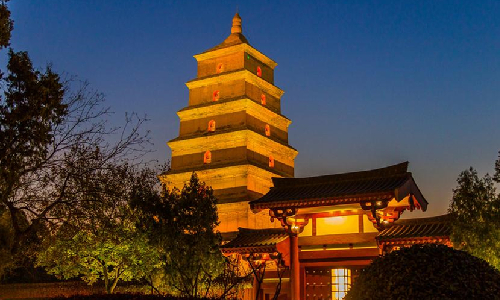
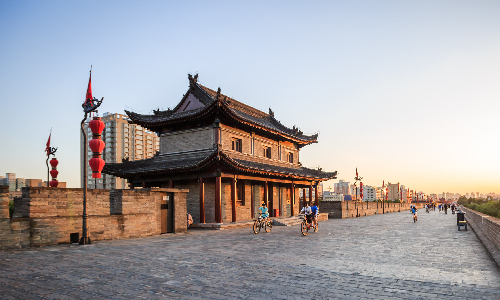
 Guilin
Guilin Today, you will leave Xi’an for Guilin. After breakfast, you will be transferred to the airport and take the estimated flight 3U3269 15:45/18:10. Once you arrive in Guilin, your tour guide will welcome you warmly at the arrival lobby. And then the tour guide will take you to the hotel where you can have a sweet sleep and make yourself energetic again.
 Yangshuo
Yangshuo Guilin
Guilin After breakfast, you will take the Li River Cruise. First, you will be transferred to the Mopanshan Pier. It will take about 1 hour(35KM) to get to the pier. And the pier is in the southeast of the Guilin downtown. After boarding, you could sit down and have a rest. The whole journey is about 4 hours. The view of Li River is the essence of the natural scenery of Guilin. During the cruise, you will not only see the peaks of different shapes formed due to the karst landforms, the crystal clear river water, but also the scene of the fisherman fishing on a fishing boat in the distance. The cruise ship will stop at the pier of Yangshuo.
In the afternoon, you will go to Yangshuo West Street. Yangshuo West Street lies in the center of the ancient town of Yangshuo. It is 8 meters wide with a length of 800 meters. This street is the oldest and busiest place in Yangshuo. During your visit, you can’t imagine that 1400 years ago this street was only 5 meters wide with only several shops. In 1998, Yangshuo Street was called Foreigners’ Street because many foreigners opened about 20 shops here. Many famous people, such as Xu Beihong (a very famous Chinese painter), Margaret Thatcher, and Clinton used to visit here.
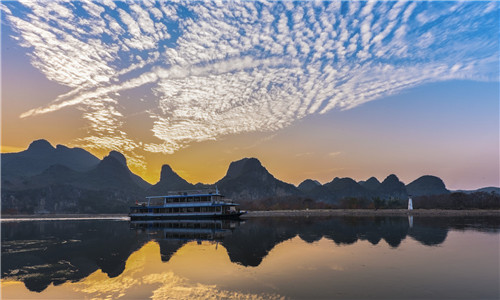
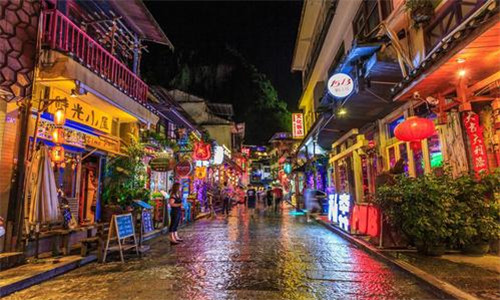
 Shanghai
Shanghai In the morning, you will follow your tour guide to Reed Flute Cave. It is located in the northwest of Guilin, 5 KM away from the city center. The Reed Flute Cave is 240 meters in depth with lots of stalactites, stalagmites, stone pillars, stone flowers, and stone curtains. The Reed Flute Cave could be said as a gift of nature. One million years ago, this place was an ancient underground lake. Later, the crustal movement made the underground water level lower and turned the lake into a cave. After years of accumulation, the stalactites are formed in various shapes, such as lion-shaped, dragon-shaped, flower-shaped, etc. After you enter the cave, you will feel like being in a fairyland.
Today is your last day in Guilin. In the afternoon, you will be transferred to the airport and take the estimated flight MU8565 13:35/16:00 to Shanghai. After your arrival, your Shanghai tour guide will be waiting for you at the airport. You can have a rest at the hotel and be prepared for tomorrow’s journey.
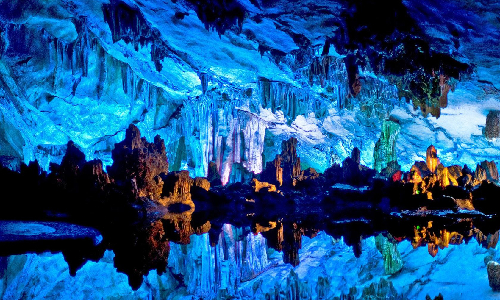
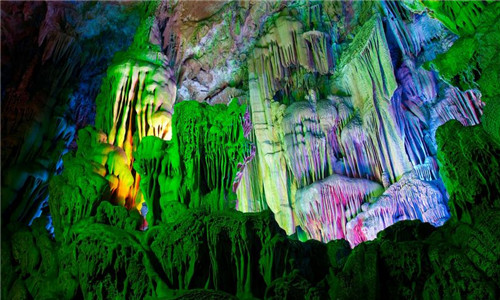
After breakfast, you will head to Jade Buddha Temple. The temple was built in 1882 (in the Qing Dynasty). It is a building imitating the architecture style of Song Dynasty (960-1279), with an area of about 7,733 square meters. You will have a chance to visit the Jade Buddha Hall. The Temple is called Jade Buddha Temple because it enshrined two jade Buddha statues, one sitting Buddha and one reclining Buddha. The sitting Buddha is enshrined in the Jade Buddha Hall. The sitting Buddha statue were carved from a single piece of jade with hundreds of emeralds and agates decorated on the edge of the cassock. You will be amazed by the glittering Buddha.
Then, you will be transferred to the Yu Garden (closed each Monday). It is located in the old town of Shanghai, built in the Ming Dynasty. It covers an area of 20,000 square meters. The Yu Garden is a classical garden with a character of the southern-China. Its first owner named it “Yu” because this character means “safety” and “happiness” in Chinese. There are five main attractions in this garden. The most worth mentioning one is Hexu Hall. The furniture in this hall is made of the roots of Banya trees and still remain the shape of roots. The unique furniture shows the craftsman’s exquisite work, which will never be surpassed by modern technology.
In the afternoon, you will go to the Shanghai Tower. Shanghai Tower is a high-rise landmark skyscraper in Shanghai with a height of about 632 meters. It is the tallest building in China and the second tallest in the world. Shanghai Tower is not only an office building but also acts as a commercial zone. Therefore, we have arranged for you to go straight to the 118th to appreciate the beautiful scenery of Shanghai on the Shanghai’s tallest observation deck. I’m sure you will have an unparalleled experience.
After enjoying the beautiful scenery, you can go to one of the symbolic places in Shanghai, the Bund. The Bund is surrounded by various financial and foreign trade institutions. Besides the famous attractions, such as Huangpu Park, Chenyi Square, and Garden Bridge of Shanghai, the Bund Lover’s Wall is also a must-visit place, especially if you come here with your love. The wall was built near the Huangpu River with a length of 1700 meters. Why is it called Lover’s Wall? From the 1970s to the 1980s, the houses were in limited areas and big families crowded in small houses. At that time, all public places were closed at night. So young people don’t have place to date with their love. When night falls, hundreds of pairs of young men and women go on a date here. Later, the government rebuilt the wall and used thousands of flowers to decorate it. The ground here is made of 140,000 colored floor tiles and granites, which made this place more beautiful. Come here and experience Chinese romance.
Later, your tour guide will take you to Nanjing Road. It is the first commercial street since Shanghai opened its port. On both sides of the roads are row upon row of commercial buildings. It is a paradise for shopping lovers. You can buy whatever you want at this place, such as silk, folding fan, and chopsticks. The time-honored cuisines on this road will appeal to you. No one doesn’t love delicious food! Being here, you must taste the Cantonese cuisine and Cantonese dim sum at Xinya Restaurant. Meat-Stuffed Mooncake at Zhenlaodafang Snack Shop, and Crispy Aromatic Duck at Yanyun Hall are also worth a try. I believe these Chinese traditional foods will satisfy your taste buds.

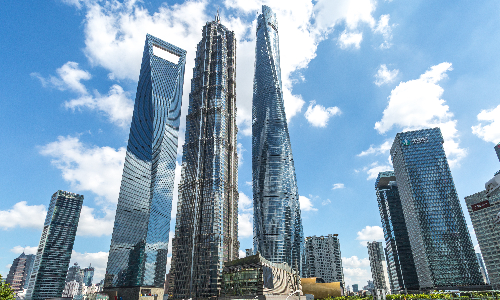
Today, you will leave China. Your tour guide will escort you to the airport according to your schedule and say goodbye to you. We hope you have enjoyed yourself in China and welcome to China next time.
Editor: Chi Mengdi
Proofreader: Summer Hou
| City | Five Star hotel list | Four Star hotel list |
|---|---|---|
| Beijing | Sunworld Dynasty Hotel Beijing Wangfujing | Sunworld Hotel Wangfujing |
| Xi'an | Tianyu Gloria Grand Hotel Xi'an | Sunworld Dynasty Hotel |
| Guilin | Lijiang Waterfall Hotel | Guilin Bravo Hotel |
| Shanghai | Ocean Hotel Shanghai | Courtyard by Marriott Shanghai Central |
 |
![]() About your child or infant, please contact us for a discounted price.
About your child or infant, please contact us for a discounted price.



We started with a few days in Beijing & ended in Shanghai, from where we visited the Forbidden City and Great Wall. In between we visited Terra Cotta Warriors Museum, Panda Base, Shanghai Disneyland.

We had a wonderful holiday in China which will remain long in the memory. China is a breathtakingly beautiful country full of splendid temples and palaces, mountains and rivers, peaceful rural scenes and bustling shopping streets.
 QUICK ENQUIRY
QUICK ENQUIRY